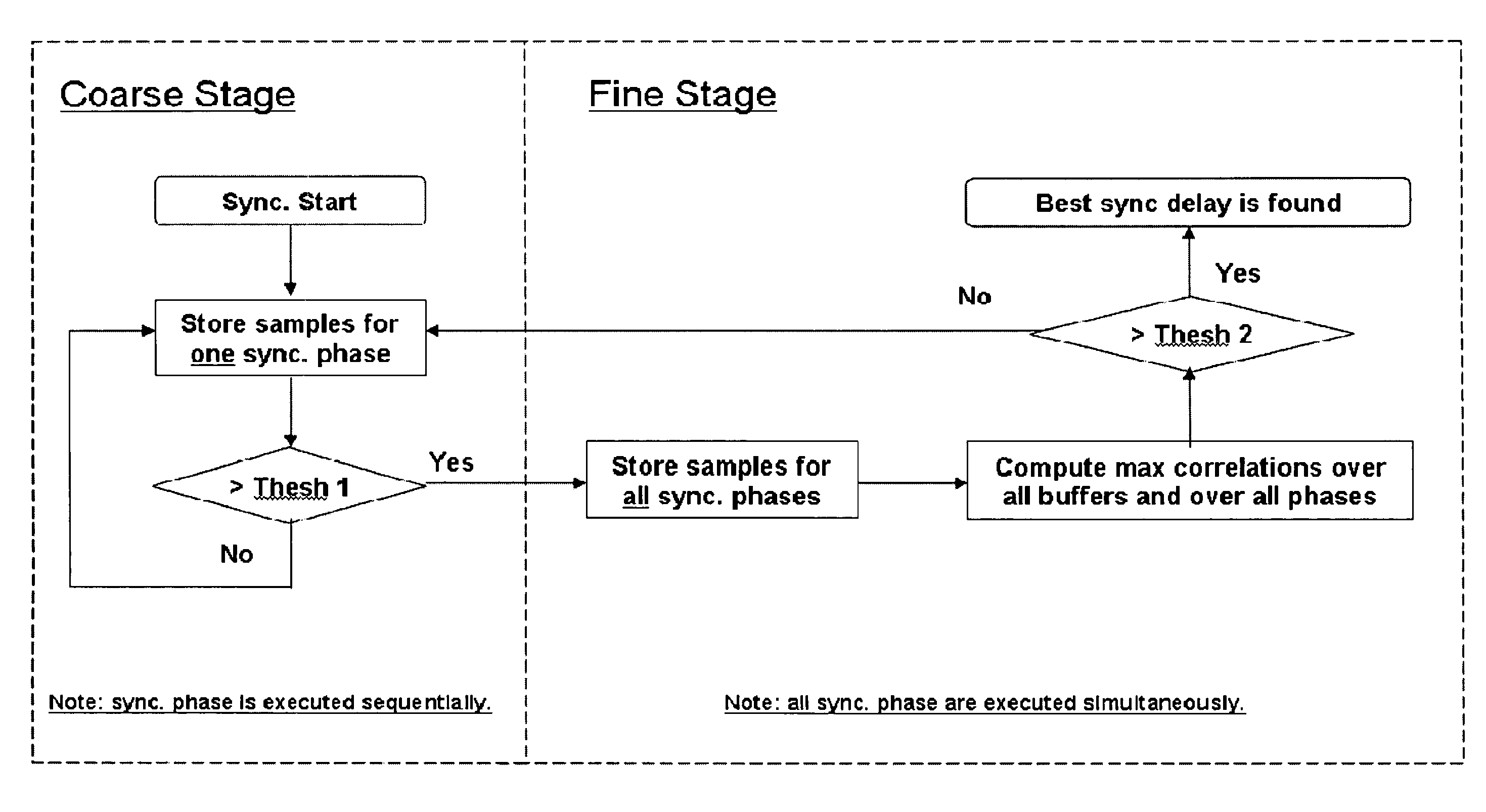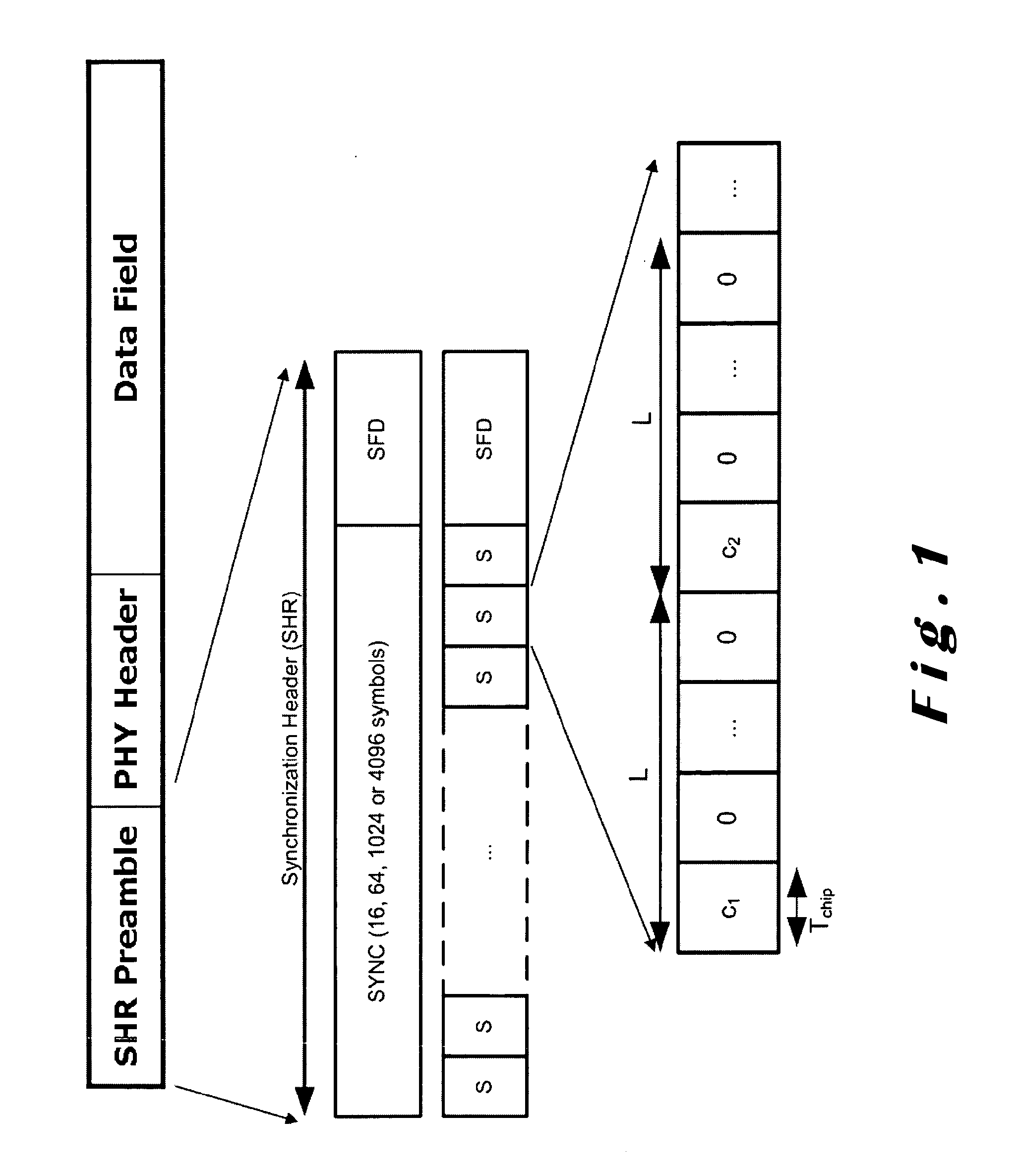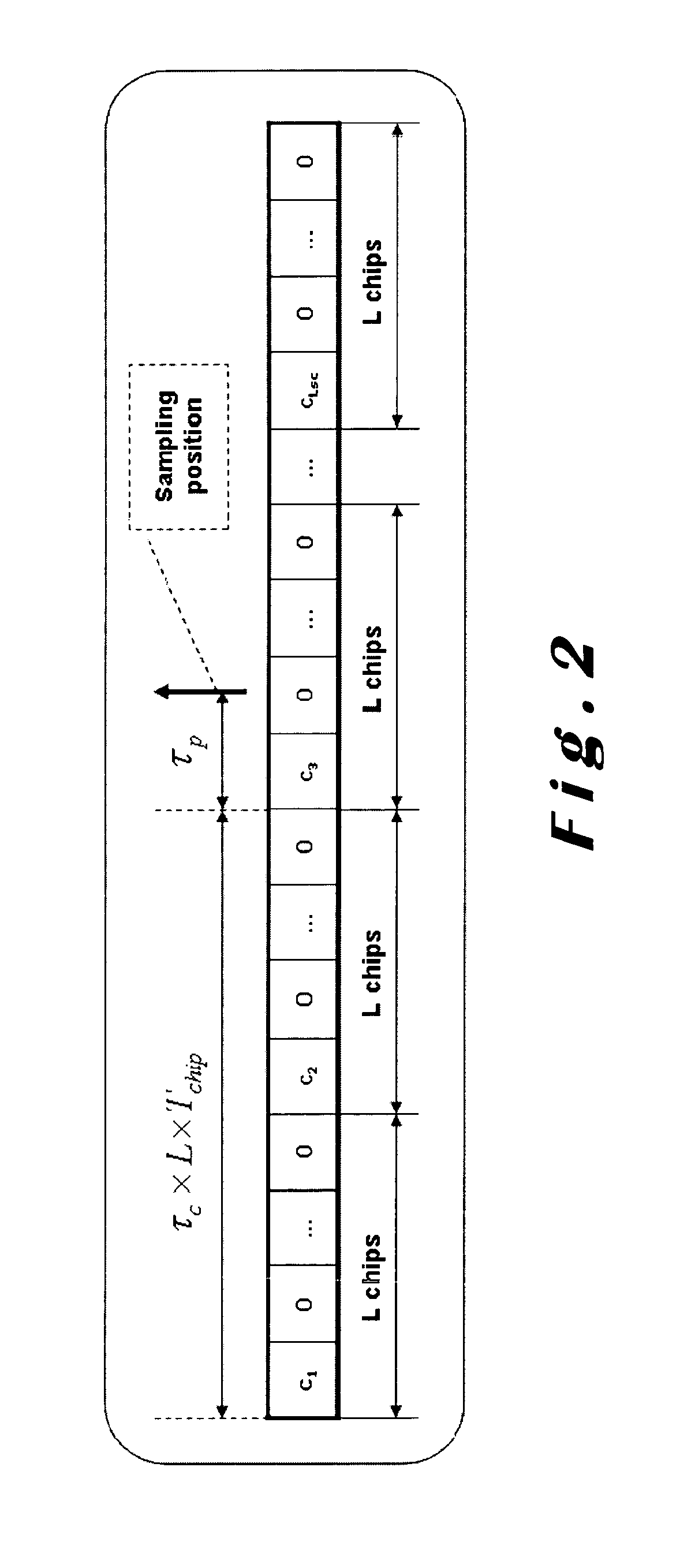Methods for Fast and Low-Power UWB IR Baseband Receiver Synchronization
a receiver and low-power technology, applied in the direction of transmission, electrical equipment, etc., can solve the problems of low sensitivity to severe multipath fading and jamming, low probability of intercept, and difficulty in performing synchronization, etc., to achieve the effect of reducing computational complexity
- Summary
- Abstract
- Description
- Claims
- Application Information
AI Technical Summary
Benefits of technology
Problems solved by technology
Method used
Image
Examples
1st embodiment
1st Embodiment
No Averaging, Extensive Fine Synchronization Search
[0046]For one symbol, each symbol part is sampled N times. Note that the choice of N is a trade-off between the duty-cycling gain and the amount of symbols required for synchronization. Further, the interval between adjacent samples could be arbitrary. For example, to reduce the searching space, we could sample at every 4 possible pulse positions as shown in FIG. 3. However, to maximize the duty-cycling gain in practical implementation where the start time of the front-end is taken into account, we could consecutively sample N times instead as shown in FIG. 4.
[0047]As a result, we introduce multiple synchronization phases in order to test all possible pulse positions and cover the full length of the pulse frame. Between two consecutive phases, we shift the sampling instances by a certain amount of time to reach the next N possible pulse positions, i.e. we apply a different sampling delay. For example, as illustrated in...
2nd embodiment
2nd Embodiment
Averaging, Extensive Fine Synchronization Search
[0056]In a second embodiment of the method, we store the samples, which are averaged over M symbols, into the FIFO buffers instead of those obtained from one single symbol as introduced in the first embodiment.
[0057]The additional averaging process in this embodiment has the advantage of reducing the variance of noisy signals and thereby increases the reliability of the synchronization method in poor SNR scenarios. In fact, this averaging process is preferred to achieve reasonable synchronization errors in different channel conditions specified by the standard. Furthermore we can use this second embodiment to ease the computational burden for low speed systems. Since we average the content of the FIFOs over M symbols before performing the correlation operation, the calculation time of all correlations can be spread over M symbol periods reducing the need for high clocking frequencies.
[0058]It has to be noted though that t...
3rd embodiment
3rd Embodiment
Averaging, Short Fine Synchronization
[0059]In order to reduce the number of needed SHR symbols, we consider a third embodiment of the method where only a part of all possible synchronization phases are considered during the fine synchronization stage.
[0060]Note that in the above described embodiments of the method the fine synchronization stage doubles the number of synchronization phases compared with the coarse synchronization stage. In addition, all the synchronization phases in the coarse synchronization stage remain the same in the fine synchronization stage. Therefore, in this embodiment, we will not process all the 2L / N synchronization stages during the fine acquisition stage. Instead, we perform two steps in the fine synchronization stage. In the first step, we process L / N synchronization phases that also exist in the coarse synchronization stage. The maximum from these phases is used for roughly determining the suspected pulse positions. Then, in the second st...
PUM
 Login to View More
Login to View More Abstract
Description
Claims
Application Information
 Login to View More
Login to View More - R&D
- Intellectual Property
- Life Sciences
- Materials
- Tech Scout
- Unparalleled Data Quality
- Higher Quality Content
- 60% Fewer Hallucinations
Browse by: Latest US Patents, China's latest patents, Technical Efficacy Thesaurus, Application Domain, Technology Topic, Popular Technical Reports.
© 2025 PatSnap. All rights reserved.Legal|Privacy policy|Modern Slavery Act Transparency Statement|Sitemap|About US| Contact US: help@patsnap.com



